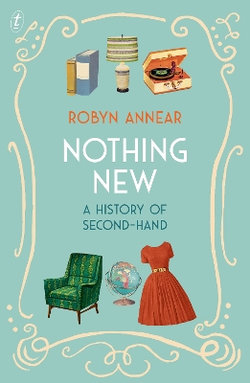Robyn Annear lends her signature wit to this fantastic history of second-hand- from the origins of the op shop to eBay, up-cycling and how new became normal.
'Given the way we live now,' writes Robyn Annear, 'it would be easy to suppose that newness has always been venerated.' But as this wonderfully entertaining short history makes clear, modern consumerism is an aberration. Mostly, everyday objects-from cast-off cookware to clothing worn down to rags-have enjoyed long lives and the appreciation of serial owners.
Nothing New is itself an emporium- a treasure store of anecdotes and little-known facts that will intrigue and enlighten the devoted bargain-hunter and the dilettante browser alike.
This title is in stock with our Australian supplier and should arrive at our Sydney warehouse within 1 - 2 weeks of you placing an order.
Once received into our warehouse we will despatch it to you with a Shipping Notification which includes online tracking.
Please check the estimated delivery times below for your region, for after your order is despatched from our warehouse:
ACT Metro: 2 working days
NSW Metro: 2 working days
NSW Rural: 2-3 working days
NSW Remote: 2-5 working days
NT Metro: 3-6 working days
NT Remote: 4-10 working days
QLD Metro: 2-4 working days
QLD Rural: 2-5 working days
QLD Remote: 2-7 working days
SA Metro: 2-5 working days
SA Rural: 3-6 working days
SA Remote: 3-7 working days
TAS Metro: 3-6 working days
TAS Rural: 3-6 working days
VIC Metro: 2-3 working days
VIC Rural: 2-4 working days
VIC Remote: 2-5 working days
WA Metro: 3-6 working days
WA Rural: 4-8 working days
WA Remote: 4-12 working days




Share This Book: